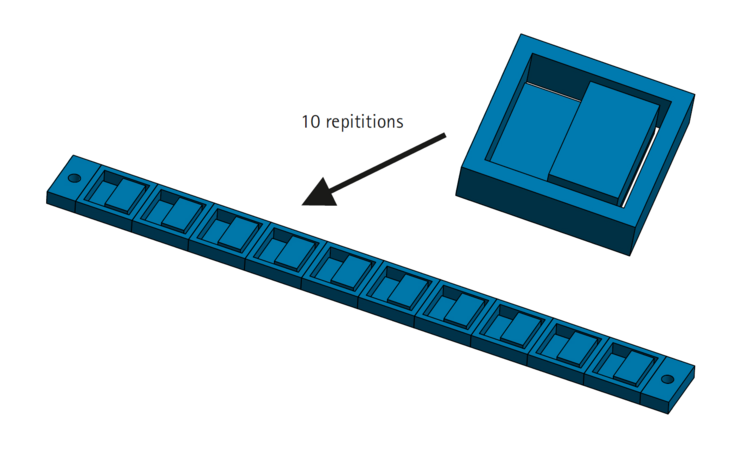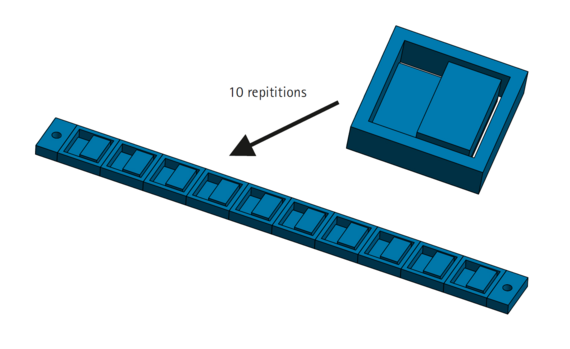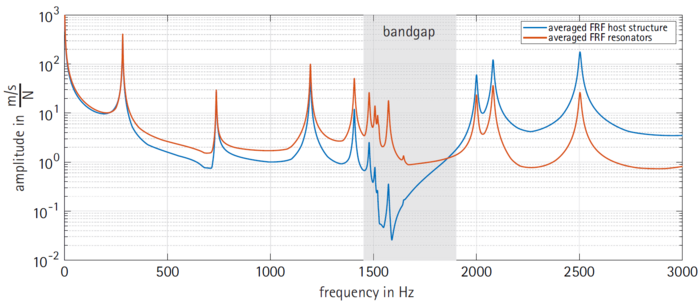Influencing the dynamic properties of metamaterial structures

| Led by: | Sebastian Tatzko |
| E-Mail: | woehler@ids.uni-hannover.de |
| Team: | Hannes Wöhler (Nichtlineare Strukturdynamik) |
| Year: | 2022 |
| Funding: | DFG |
| Duration: | 01.04.2022-31.03.2025 |
Project description






This project focuses on the quantitative and qualitative influencing of the dynamic behavior of metamaterial structures with regard to the reduction of vibration amplitudes. A fundamental feature of metamaterial structures is the existence of stop bands (bandgaps), which can be shifted in the frequency range through specific structure design and are decisive for vibration reduction. (See figure 1)
The Bloch theorem is often used to calculate the bandgap. Complex boundary conditions are applied to the finite element structure of a unit cell. This allows the bandgap of a structure consisting of an infinite number of unit cells to be determined quantitatively. However, dynamic effects due to boundary reflections are neglected. In order to obtain more precise descriptions of the bandgap for finite structures, it is necessary to describe the metamaterial structure as a whole. The modeling and simulation of the transfer behavior of metamaterial structures requires various model reduction methods, such as dynamic condensation or Craig-Bampton reduction, due to the complex geometries for efficient calculations. (See figure 2)
Another key aspect of this research project is the experimental validation of the calculations. For this purpose, the designed metamaterial structures are produced using 3D printing techniques and the dynamic transfer behavior is investigated in the laboratory. The excitation is carried out either with an impulse hammer or an electrodynamic shaker, while the vibration responses are measured contact-free on the entire structure using laser scanning vibrometry
The term metamaterial is often equated with the periodic arrangement of an identical unit cell, which is not always the case. In addition to periodic arrangements, the variation of the spacing between two resonators and the systematic detuning of the resonators with respect to the influence of the bandgap are also investigated both simulatively and experimentally


